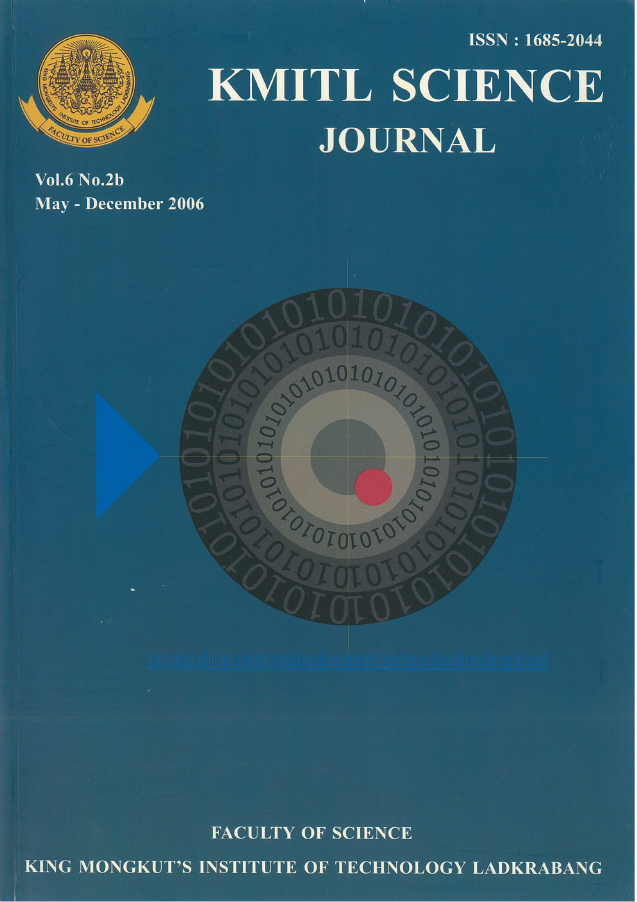UV Radiation Energy Consumption in Curing Process of Epoxidized Sunflower Oil-Nanocomposite Coatings
Main Article Content
Abstract
Epoxidized sunflower oil (ESO) can be cured with ultraviolet radiation using either cationic or hybrid initiation. The organoclay was prepared by cationic exchange process, in which sodium ions were replaced by alkyl ammonium ions. Organoclay was incorporated into epoxidized sunflower oil UV-curable systems. The effects of diluents and types of photo initiators were studied. It was found that the formulations with hybrid photoinitiator required energy in curing process less than those with cationic photoinitator. Moreover, the formulations without diluent can be cured with lower radiation energy than those with diluent. The X-ray diffraction patterns of organoclay-incorporated UV-curable film showed exfoliated structure of organoclay in the UV-curable coating film.
Keywords: -
Corresponding author: E-mail: jnantana@sc.chula.ac.th
Article Details
Copyright Transfer Statement
The copyright of this article is transferred to Current Applied Science and Technology journal with effect if and when the article is accepted for publication. The copyright transfer covers the exclusive right to reproduce and distribute the article, including reprints, translations, photographic reproductions, electronic form (offline, online) or any other reproductions of similar nature.
The author warrants that this contribution is original and that he/she has full power to make this grant. The author signs for and accepts responsibility for releasing this material on behalf of any and all co-authors.
Here is the link for download: Copyright transfer form.pdf
References
[2] Vaia R.A., and Giannelis E.P. 1997, Macromolecules, vol.30, p 7990.
[3] Zhang Q., Fu Q., Jaing L., and Lei Y. 2000, Polym Int., vol.49, p1561.
[4] Kato M., Usuki A., and Okada A. 1997, J. Appl Polym Sci., vol.66, p1781.
[5] Akelah A., and Moet A. 1996, J. Mater Sci., vol.31, p 1064.
[6] Doh J.G., and Cho I. 1998, Polym Bull, vol.41, p511.
[7] Wang Z., and Pinnavaia T.J. 1998, Chem Mater, vol.10, p3769.
[8] Decker C. 1996, Prog Polym Sci, vol.21, p1319.
[9] Decker C. 2002, Macromol Rapid Commun, vol.23, p1057.
[10] Technical Information, “UV curing, Technical principle and mechanism”, Ciba Specialty Chemicals 2004.
[11] Crivello et.al, US Patent 5318808, June 1994.
[12] Treybig et.al, US Patent 5151485, Sept 1992.
[13] Wan Rosli W.D., Kumar R.N., Mek Zah S., and Hilmi Mohd M. 2003, Eur Polym J., vol. 39, p593-600.
[14] Raghavachar R., Sarnecki G., Baghdachi J., and Massingill J. 2000, J. Coat Tech., vol.72, p125.
[15] Thames S.F. and Yu H. 1999, Surf Coat Tech, vol. 115, p208.
[16] French et al, US Patent 3360531, Dec 1971.
[17] Jiratumnukul N., Pruthipaitoon S., and Pitsaroup T., J. Appl Polym Sci., in press.


